This article is part of a series on Edomae sushi.
If you think of sushi has a balance of flavours, wasabi plays provides and spice and kick that balances out the sweet and sourness of the rice, and the savouriness of the fish. It helps to cut the fatty mouthfeel from slices of fish belly whilst also providing a sweet aftertaste. Wasabi (わさび/山葵) or Wasabia japonica is a plant from the Brassicaceae family from which horseradish and mustard also originates from. Compared to horseradish which’s root is eaten, it is the rhizome of the wasabi plant that is grated and used to season sushi. Compared to horseradish, it has a more herbal taste with a gentler spice, finishing with a slight sweetness.
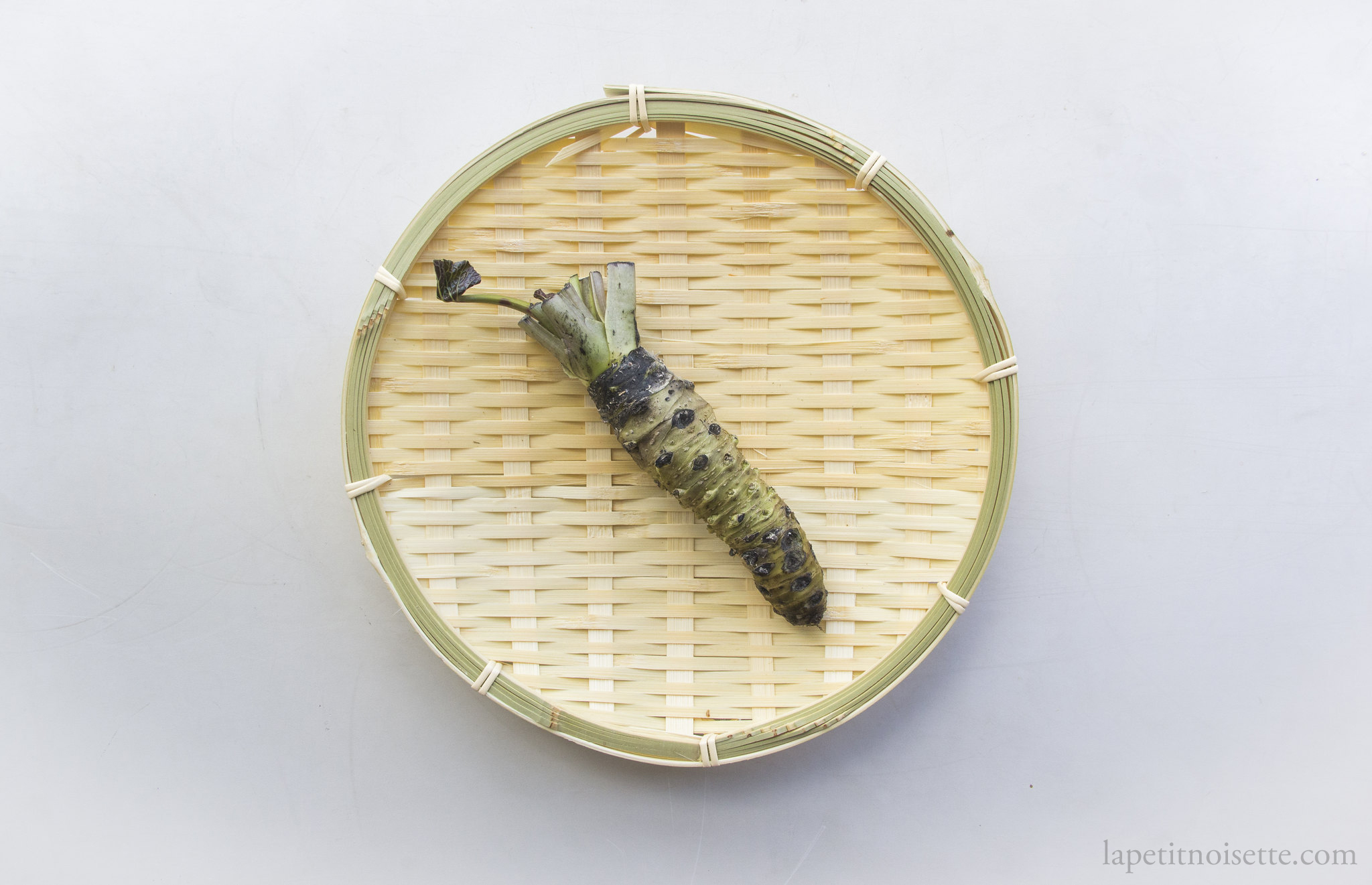
The plant is indigenous to Japan and grows naturally in the streams and rivers around the mountainous regions of Japan. Whilst the highest amount of wasabi by weight is grow in the Nagano Prefecture, the restaurant I worked at sourced our Wasabi from Amagi, from Shizuoka Prefecture. The wasabi plant is extremely demanding, taking a minimum of two years to mature, whilst only growing in the cleanest of mountain streams.
A small amount of pollution is enough to kill off the wasabi plant and thus it is in a way a symbol of the purity of Japan’s mountains rivers. The wasabi plant may also only grow between 9 and 16 ° C. Above 20 ° C, the quality of the wasabi will start to deteriorate within 3 hours. The wasabi plant also needs to be grown in the shade. Because of this, wasabi is extremely hard to cultivate outside Japan, let alone inside Japan, with maybe only 3 to 4 farms taking doing so in Europe and America. This in turn has made real wasabi rhizomes expensive within japan and extremely expensive outside Japan.
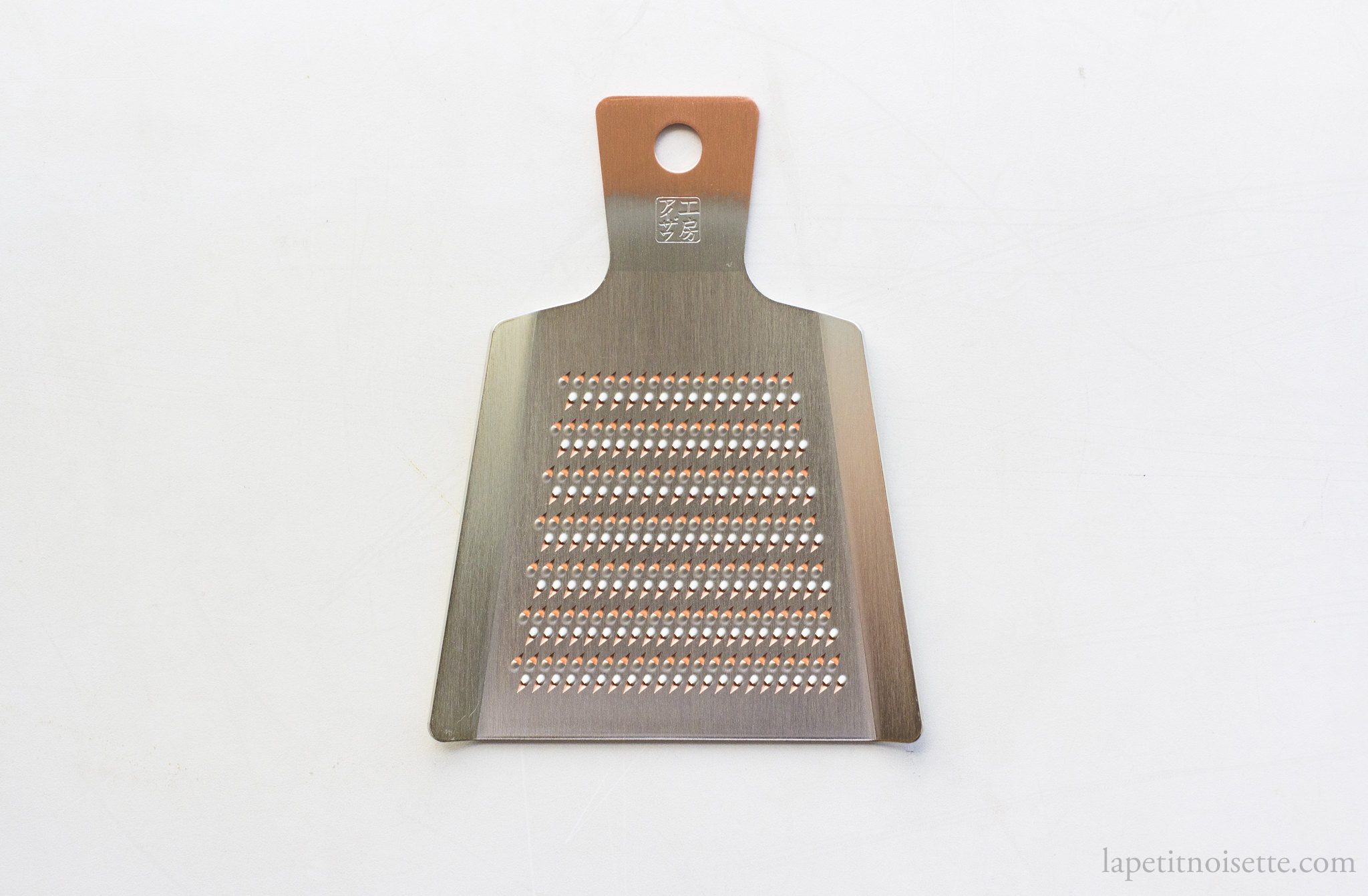
Wasabi that you would typically find in a bottle usually reads 1 to 2% wasabi, with the remaining paste being substituted with horseradish and food colouring. In fact, horseradish in Japan is refered to as seiyo wasabi (西洋わさび), or western wasabi. The quality of wasabi can actually be judged by the distances between the knobs of the wasabi. Knobs too far apart would indicate a wasabi that had grown too fast. The wasabi from such a plant would be dilute in flavour. Conversely, two cramped a distance between the knobs would indicate a wasabi that had grown too quickly, which would be too spicy to use. As mentioned above, we use small wasabi that is at least 3-years old from Amagi.
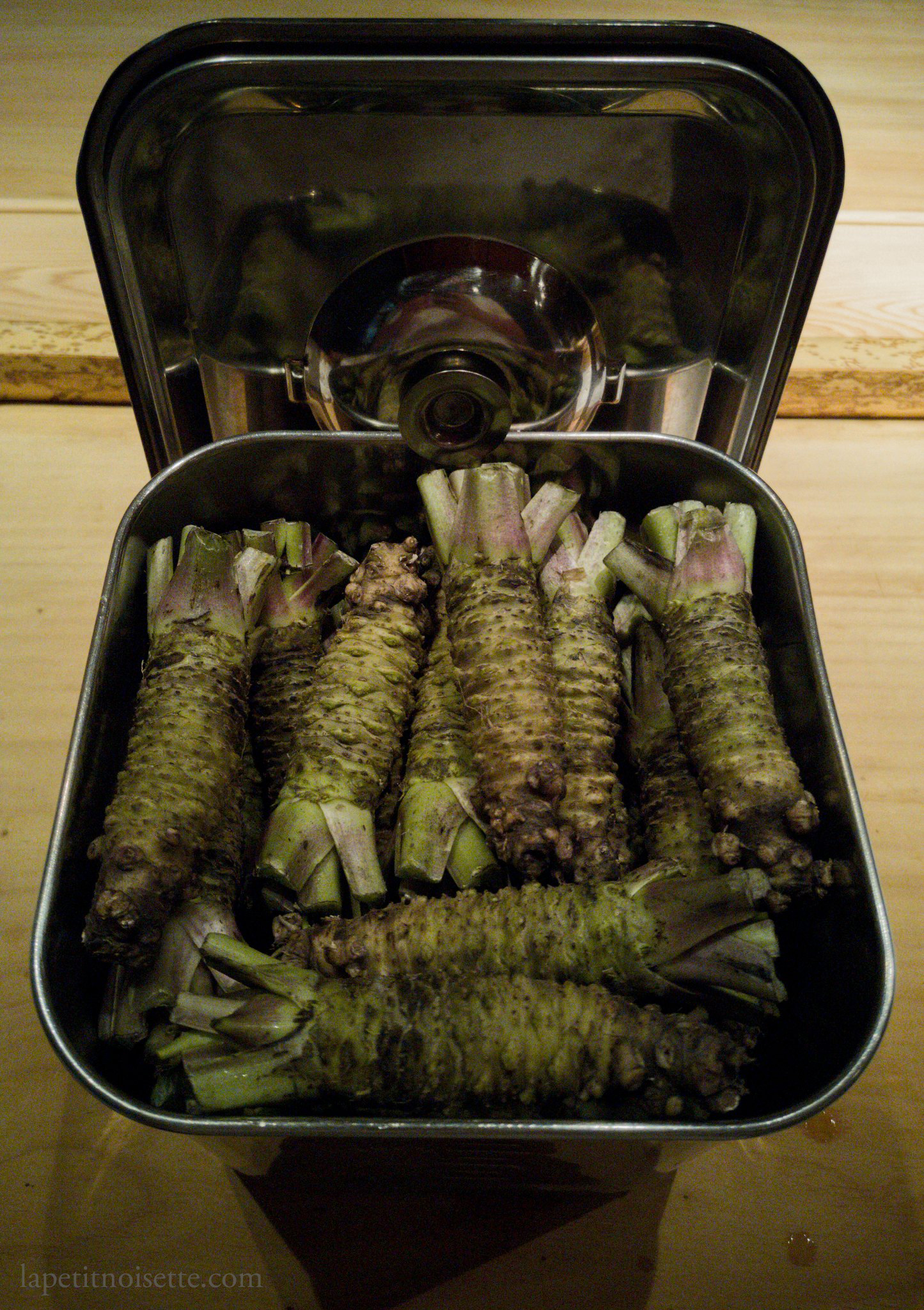
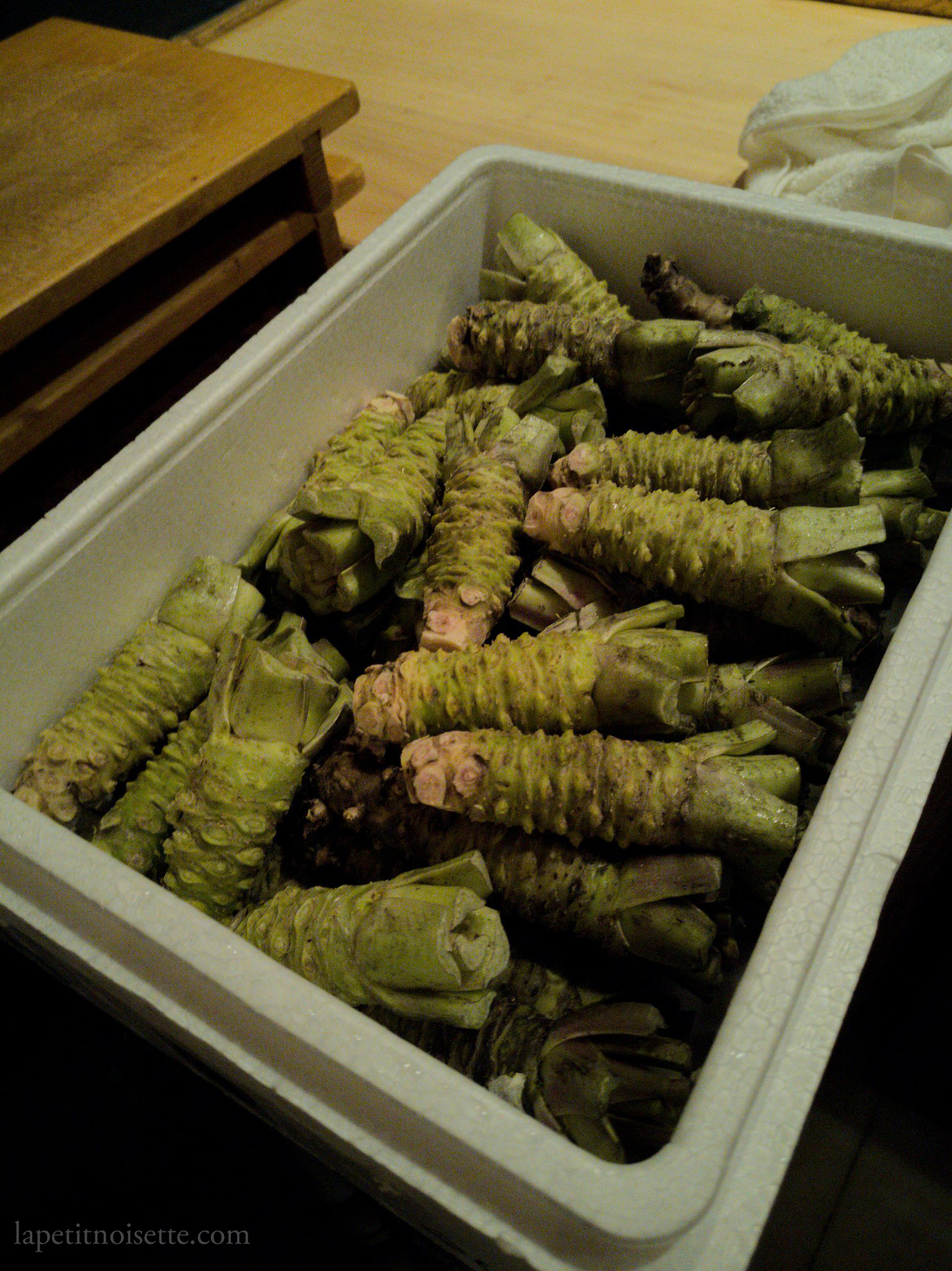
The spice of the wasabi originates from the chemical allyl isothiocyanate, which is produced when the enzyme myrosinase breaks down thioglucosides. This occurs when the plant cells of the wasabi is ruptured or broken down. In nature, this would typically happen when a herbivore decided to take a bite of the plant, and thus it serves as a defensive mechanism. This is also why wasabi is traditionally grated using a shark-skin grater, which is able to grate the wasabi fine enough to maximise the production of allyl isothiocyanate. Nowadays, a metal grater (oroshigane/おろし金) is used instead. The receptor on our tongue that is able to interact with wasabi is offically called TRPA1, which is related to (and thus closely named) TRPV1, the receptor for capsaicin. Capsaicin is the chemical that is responsible for making chilies spicy, so in a way the two types of spiciness are related but are perceived differently. For example, the heat from wasabi sort of travels up your noise, instead making your mouth burn.
Immediately after grating, the myrosinase starts to rapidly breakdown thioglucosides to produce allyl isothiocyanate. As the amount of allyl isothiocyanate increases, so does the spiciness of the wasabi paste. The increase continues up to 5 minutes, before starting to fade for the next 10 minutes. This means that if you’d want to taste wasabi at its most spicy, try it 5 minutes after grating. After a total of 15 minutes after grating, the taste of the wasabi will completely fade if not covered. Because of this, grated wasabi must always be covered. Some of the other Michelin sushi restaurants just keep the wasabi in an overturned bowl.
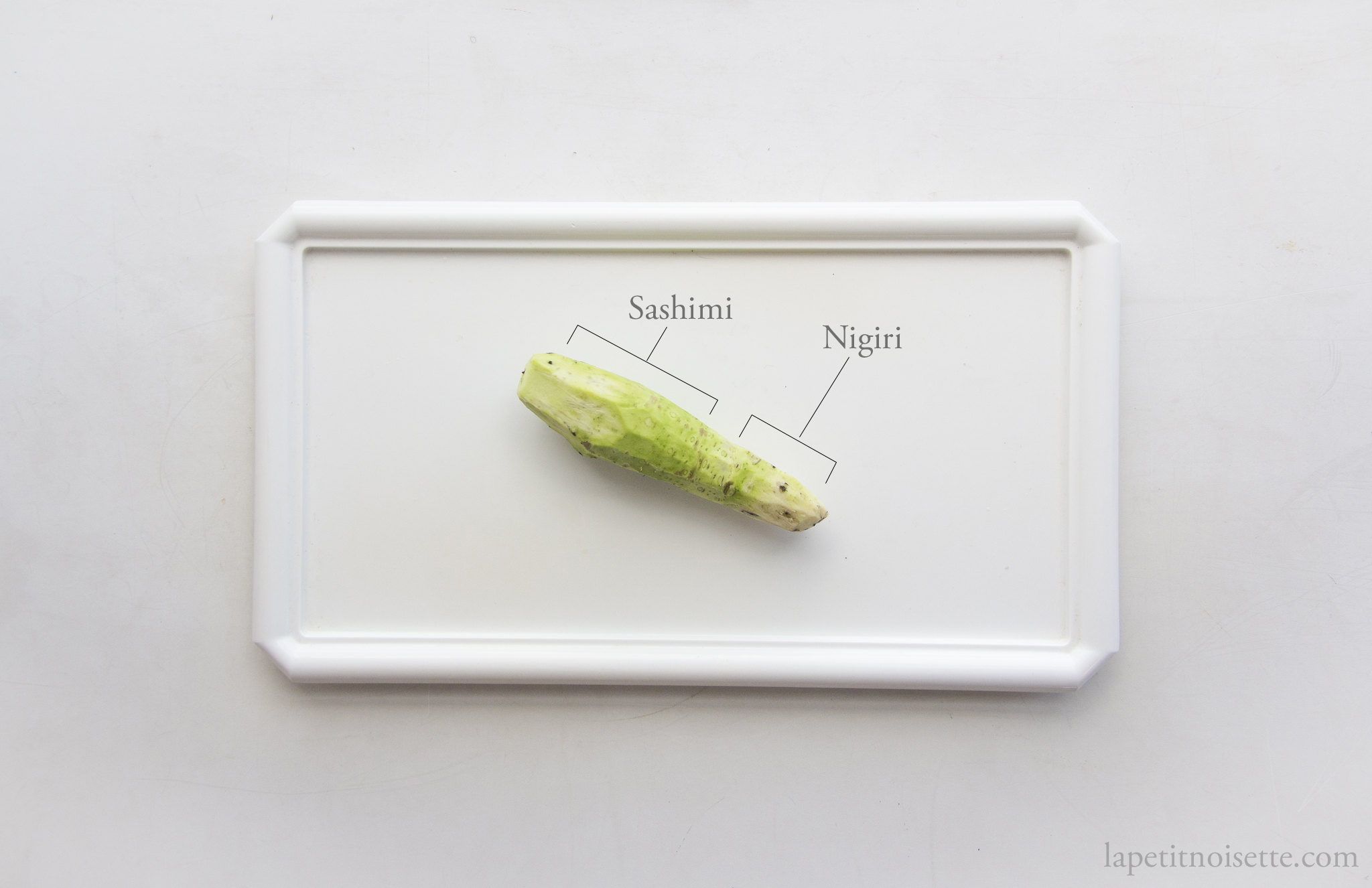
Whilst working at the restaurant, we would clean and shave off the skin and stems of the wasabi 4 to 5 hours before service, and only grate the wasabi 30 minutes before the guest arrive. By having the wasabi be grated 30 minutes in advance, most of the spiciness would have subsided, allowing us to add more wasabi to the sushi without it being too spicy. This allows the guest to enjoy the taste of the wasabi. Remember to cover the wasabi if grating in advance to prevent flavour lost.
After being delivered, we transfer the wasabi into a metal container and keep it in a fridge that is kept at around 1 to 2 ° C. The wasabi will keep for 2 weeks at this temperature. After cleaning and shaving off the skin of the wasabi earlier during the day, we wrap the wasabi in clean and damp fish paper (magu roll) or kitchen towel before wrapping a second layer of clingfilm around it. This prevents the wasabi from drying out.
When grating the wasabi, it is important to grate the wasabi in large circles, maximising the surface area of the grater, thus more efficiently rupturing the cells of the wasabi, releasing more of the flavour. The root tip of the wasabi is actually paler in comparison to the body of the wasabi. We therefore serve the body of the wasabi for sashimi but the root tip of the wasabi rhizome only for nigiri, as it would be hidden in between the rice and fish and therefore not matter if the colour was not as visually appealing.
How to grate wasabi:
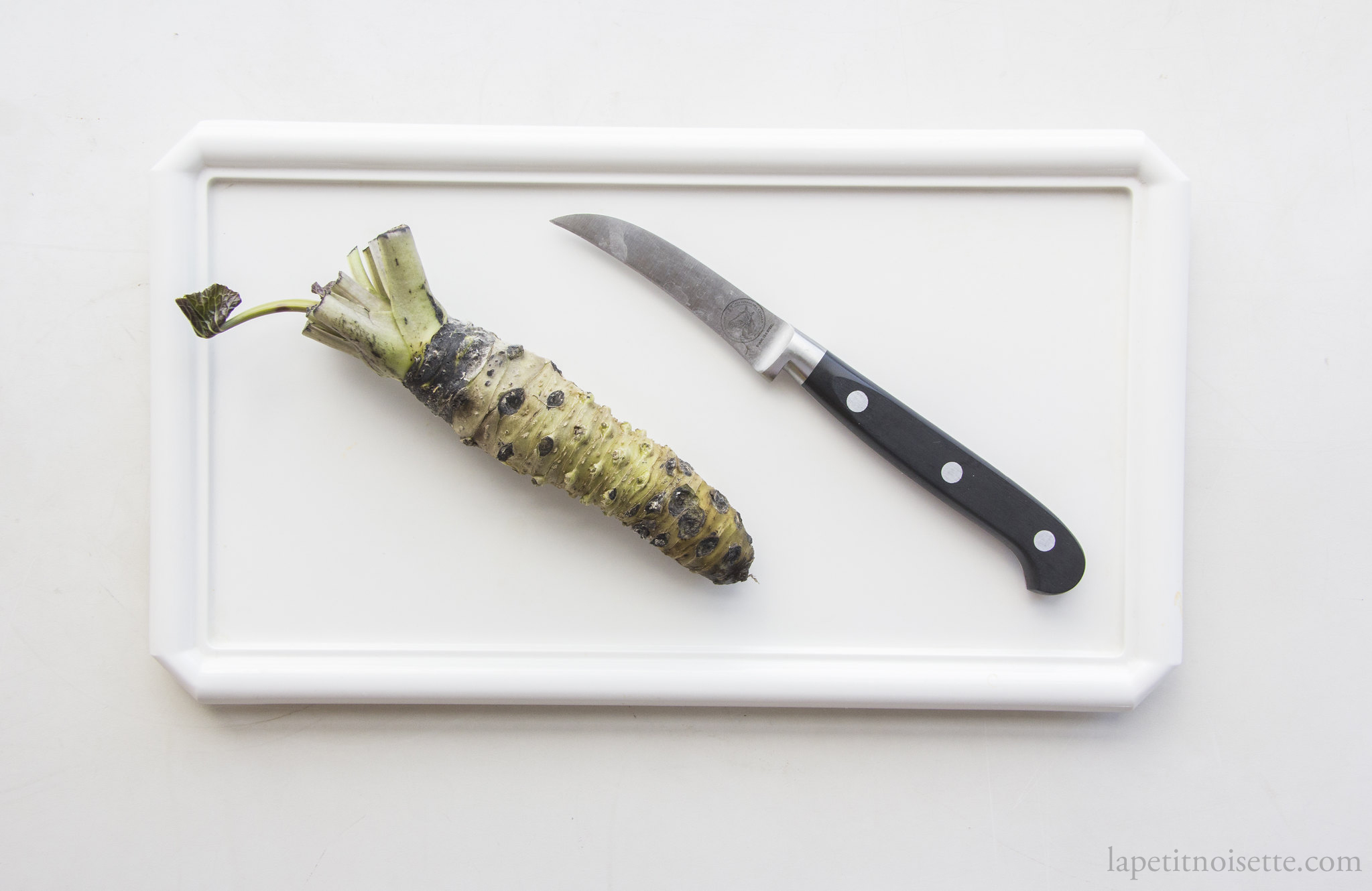
Starting with a sharp pairing knife, shave away you towards the leaves in a gentle motion, slowing removing a layer of stem and skin.
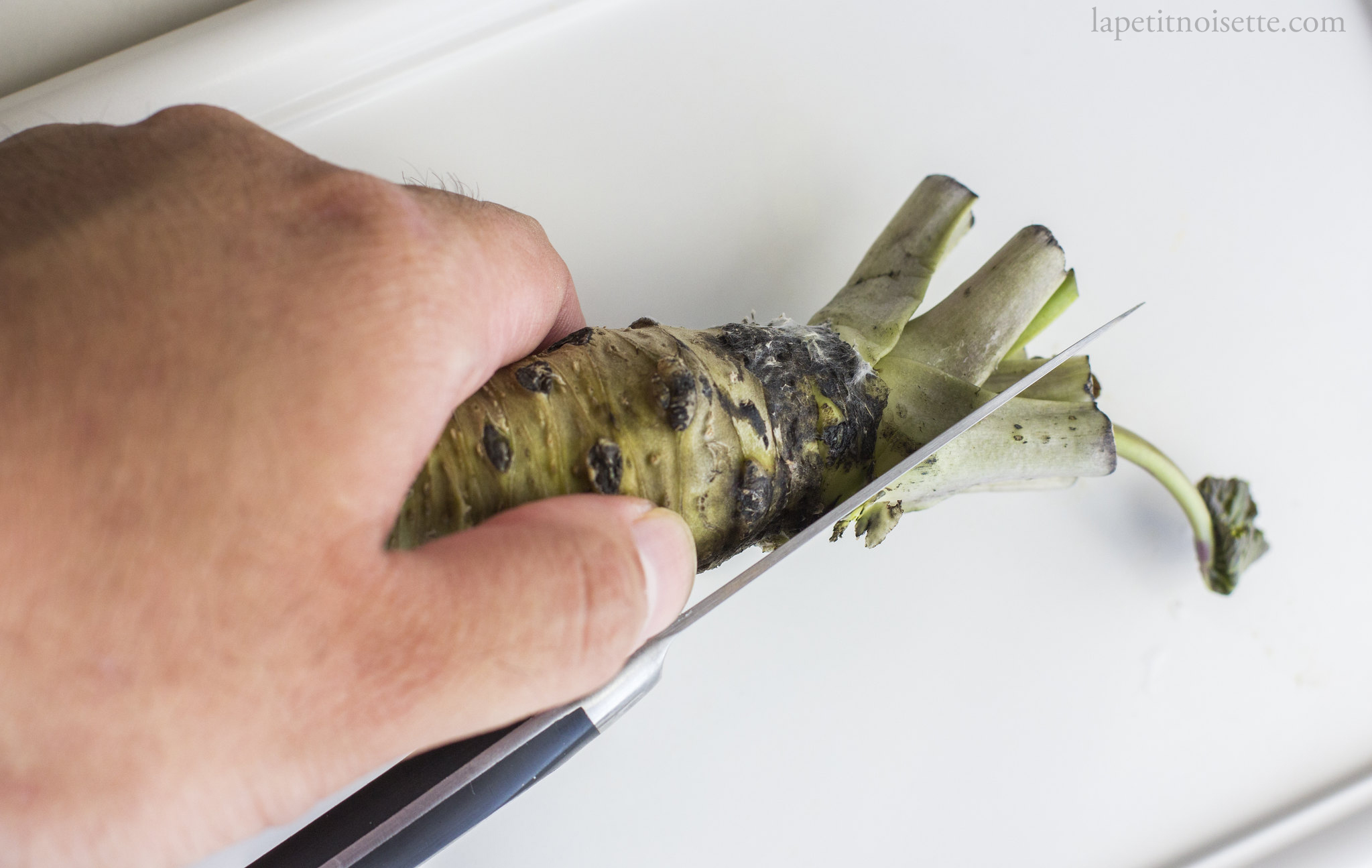
Repeat all around the wasabi as you go to shave off the entire stem.
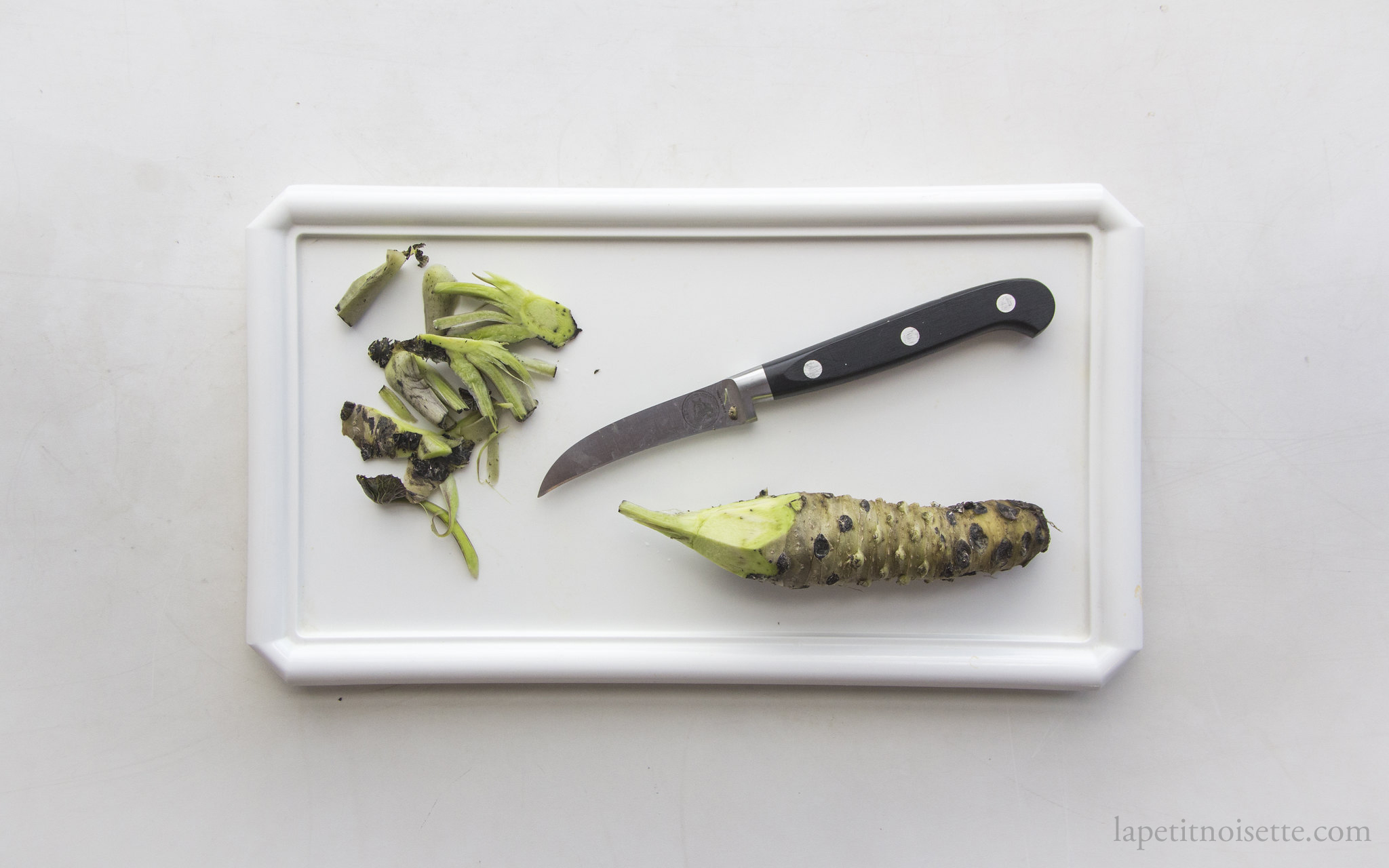
Continue shaving away from you, remove the middle layer of skin.
Be careful not to angle the blade too far down towards the wasabi, which would result in you shaving off some flesh along with the skin, thus wasting wasabi.
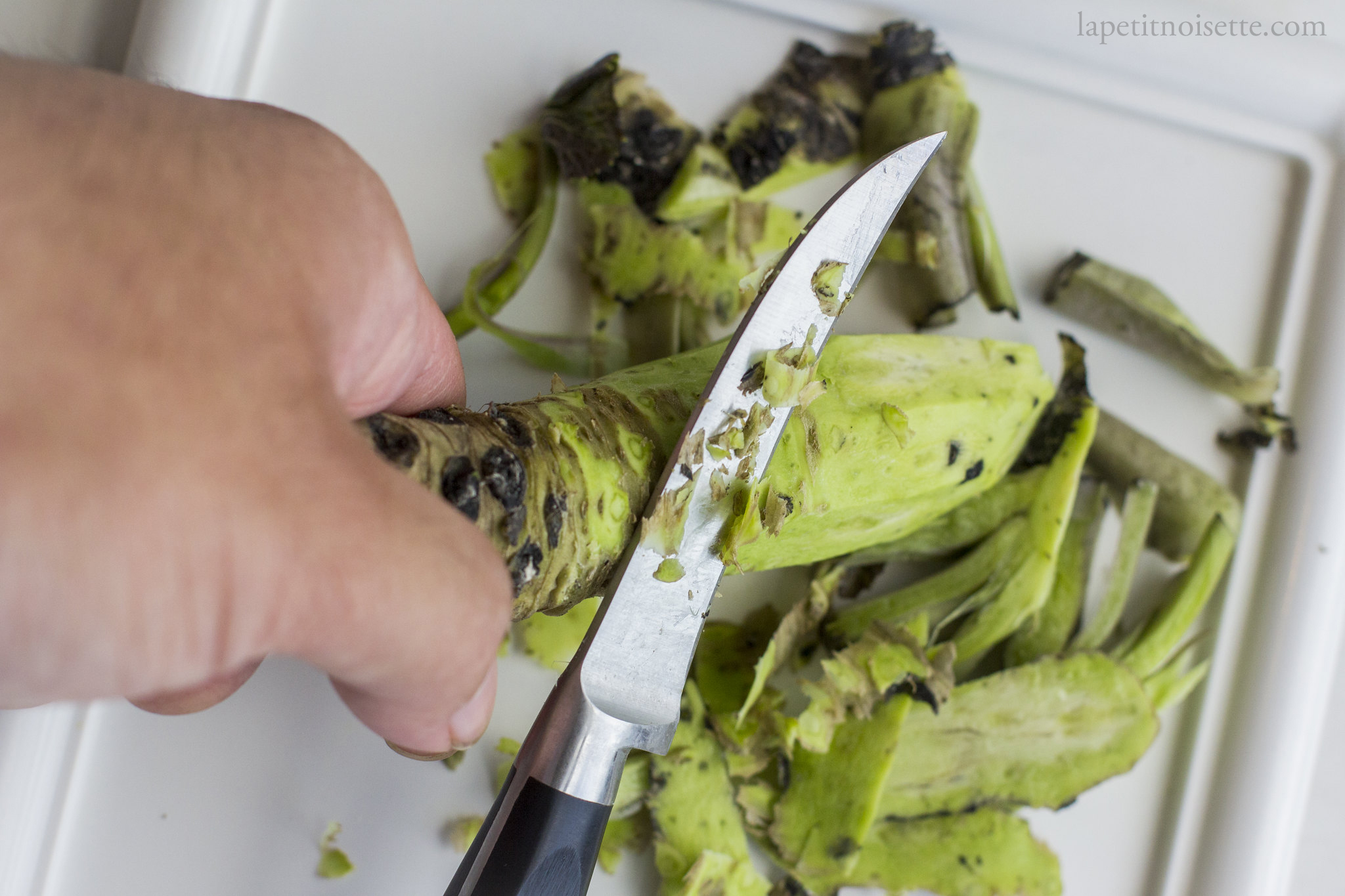
This method of shaving wasabi may seem wasteful, but it is not possible to use a peeler as the knobs and skin of the wasabi is too tough and bumpy.
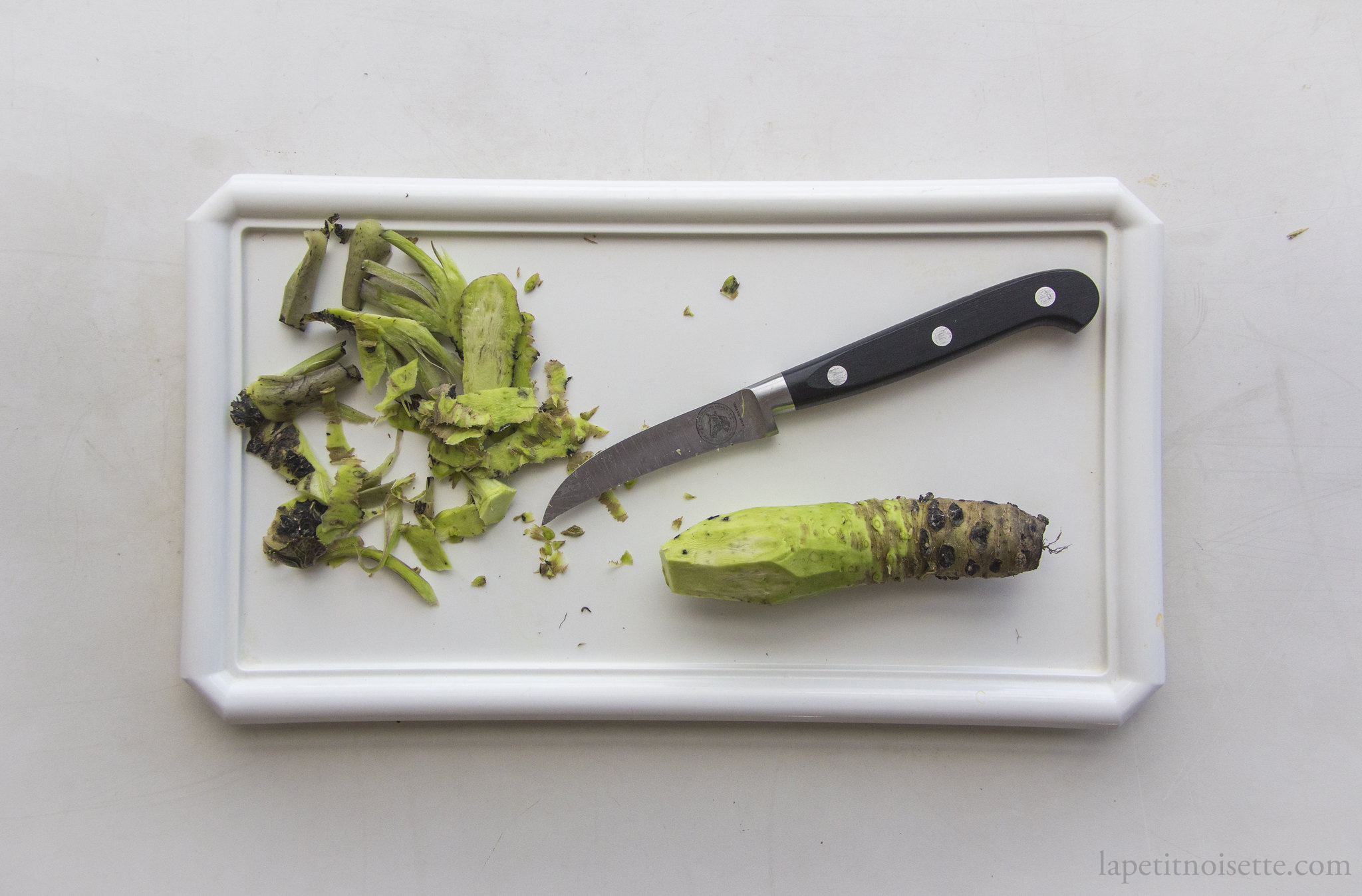
Turn the wasabi the other way around and shave off the skin around the root end of the rhizome.
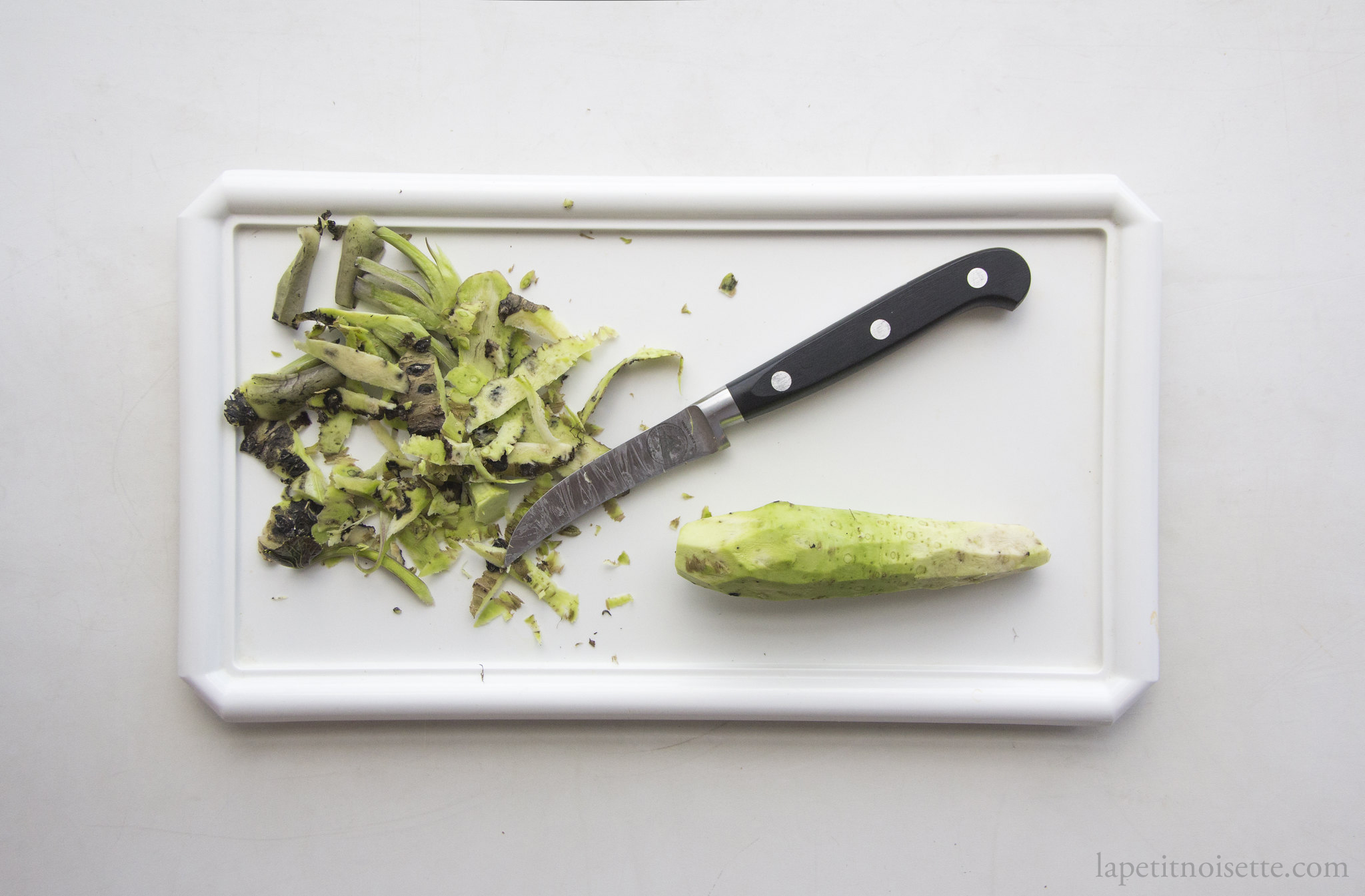
If not immediately using, wrap with paper towel (or fish paper if available).
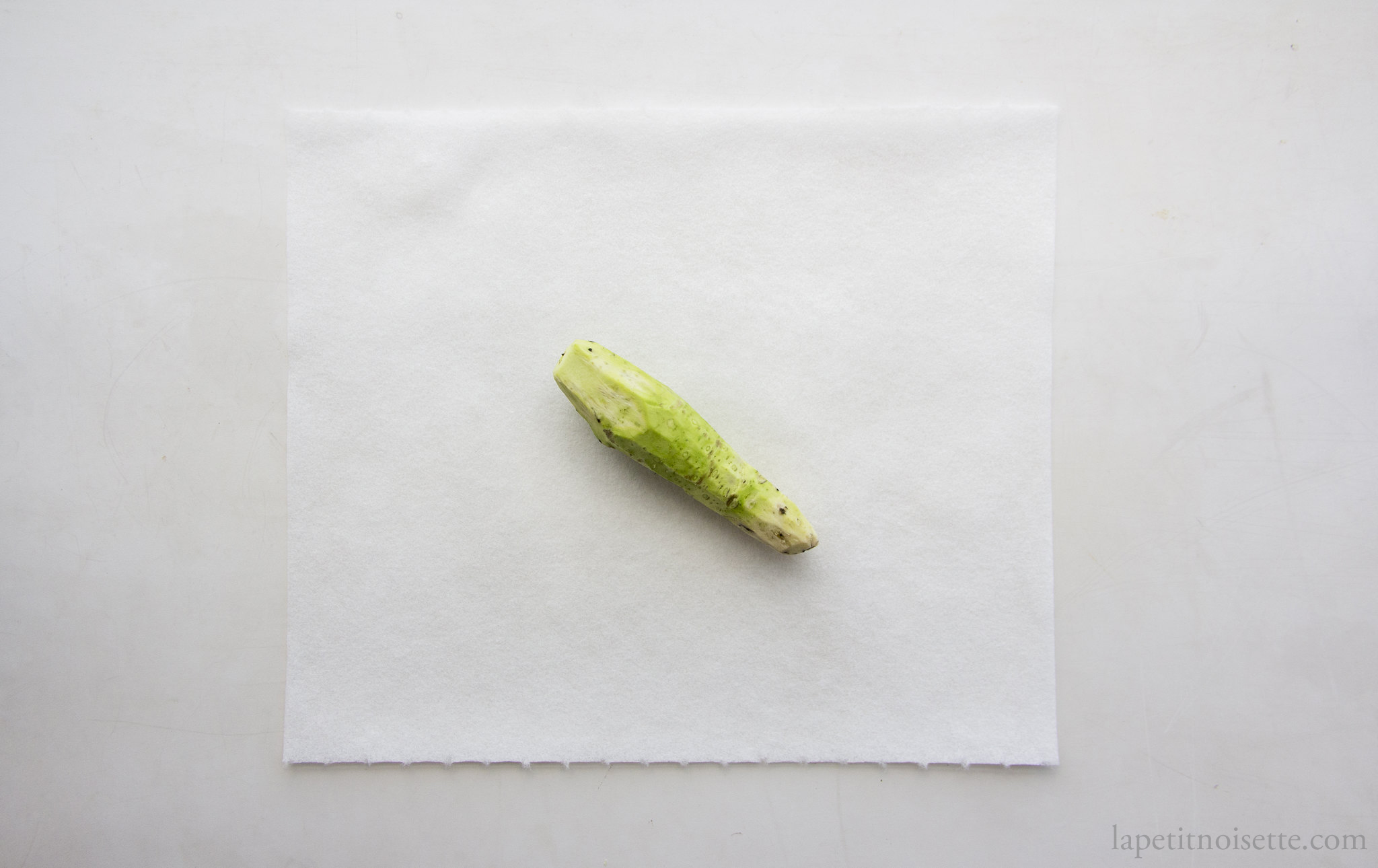
After wrapping in paper towel, briefly wet the paper towel before wrapping in a layer of clingfilm. Store in the fridge for up to 3 days. Inversely, you can wet the paper towel, wring it out and then only wrap the wasabi (and then cling wrap).
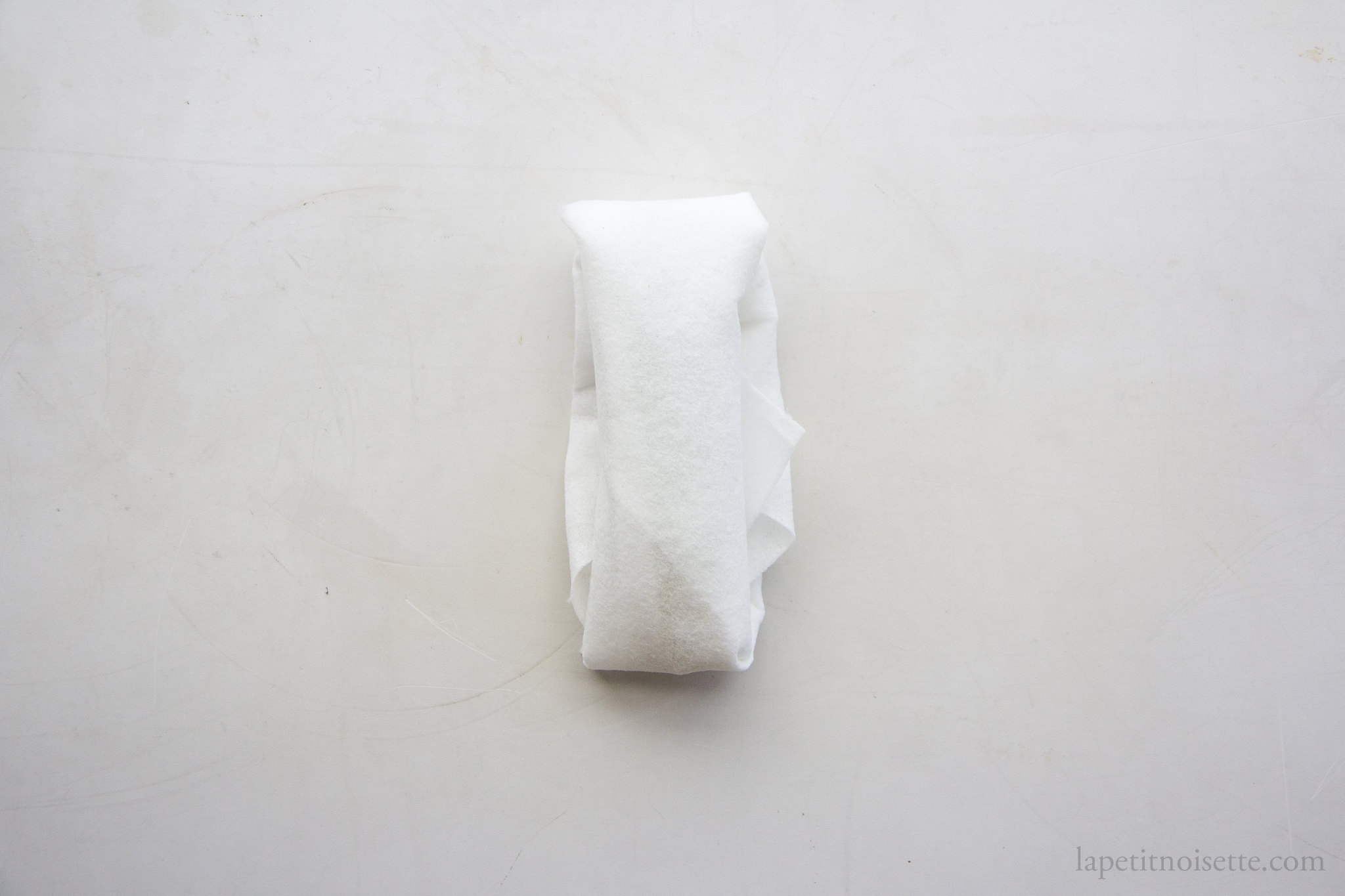
To start grating the wasabi, start grating from the stem tip.
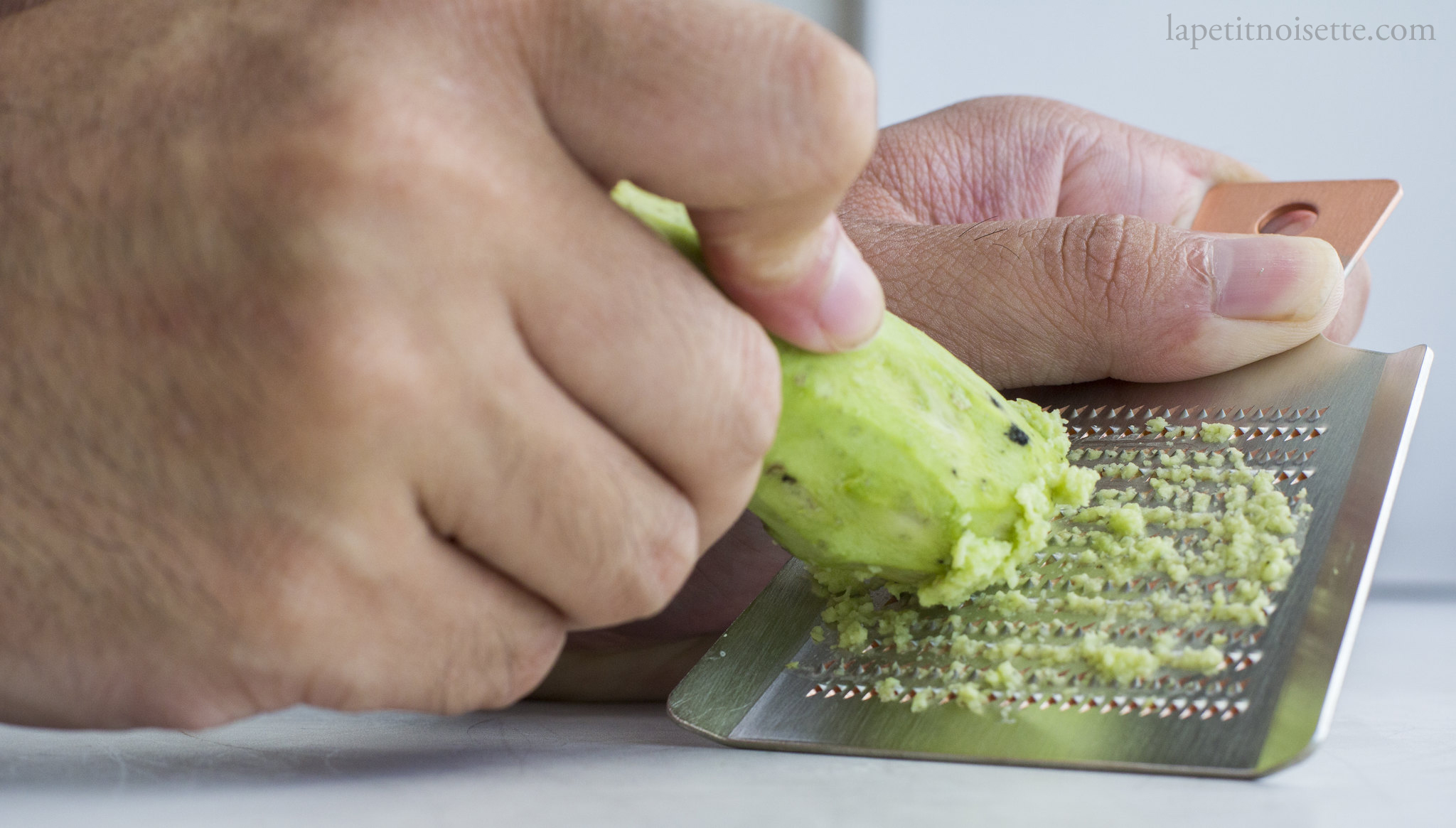
Grate in wide circles to maximise the surface area.
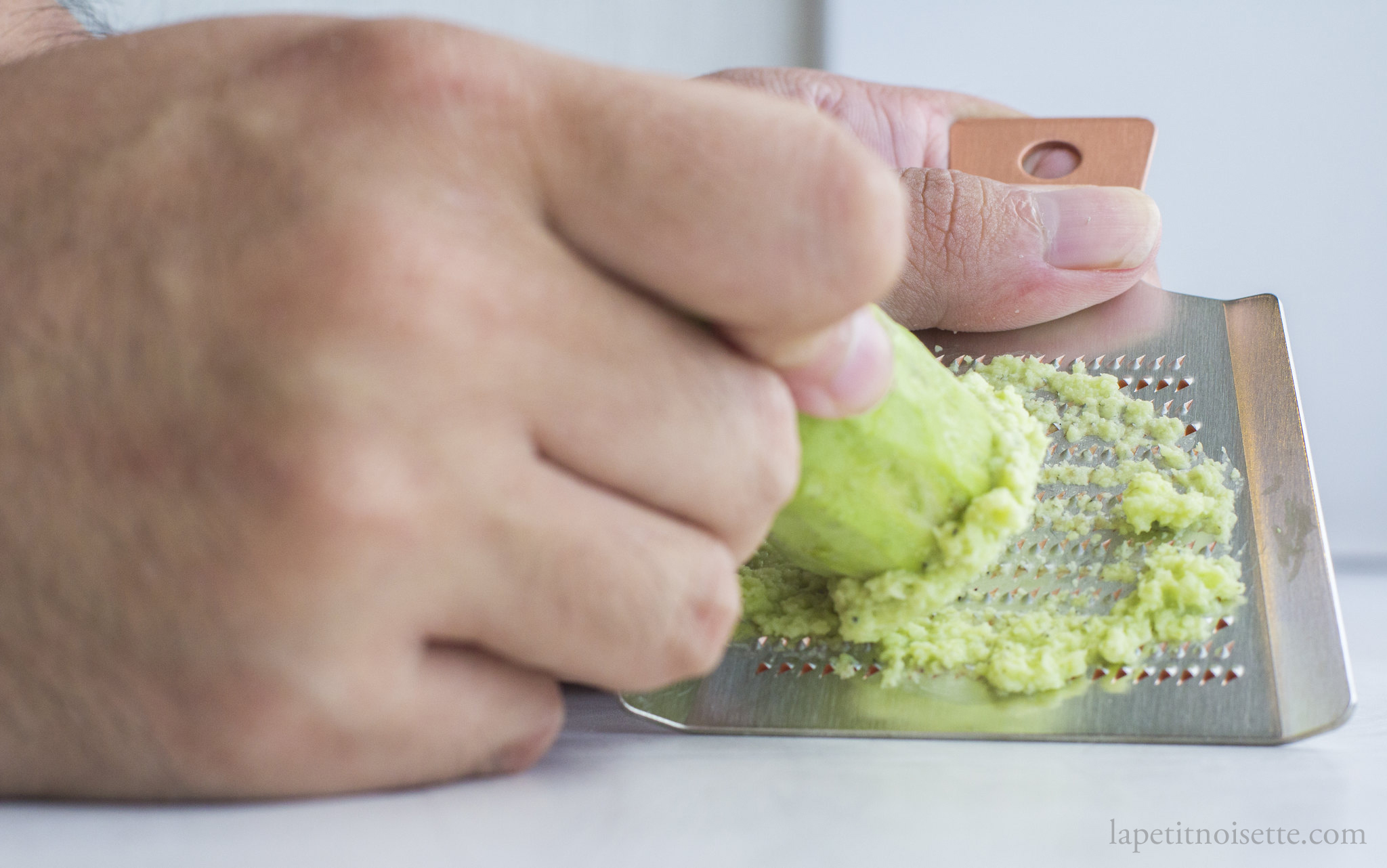
When a large amount of wasabi has been grated, use your finger to gently gather and slide the wasabi onto your index finger.
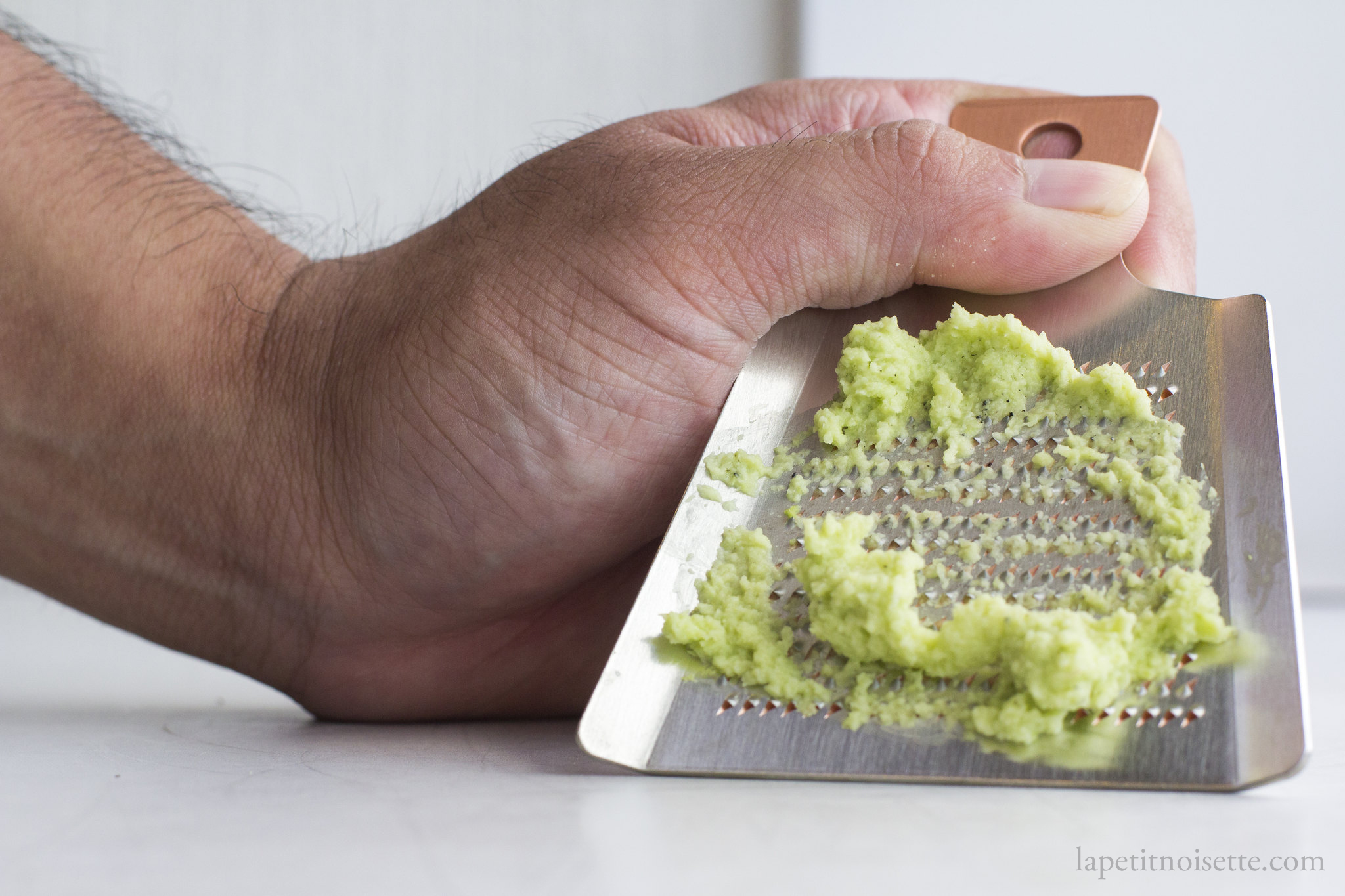
Only slide downwards and gently to avoid grating your finger. 
In the restaurant, we serve the wasabi by gently pushing it off our index finger with our thumb onto the pile on a plate or counter as seen in the pictures below.
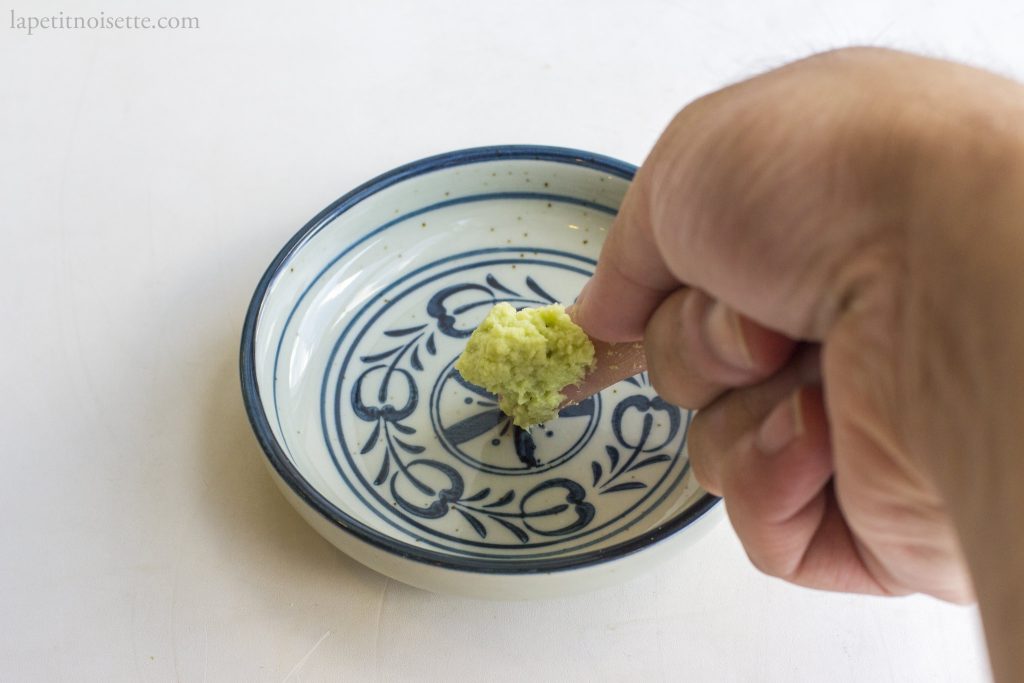
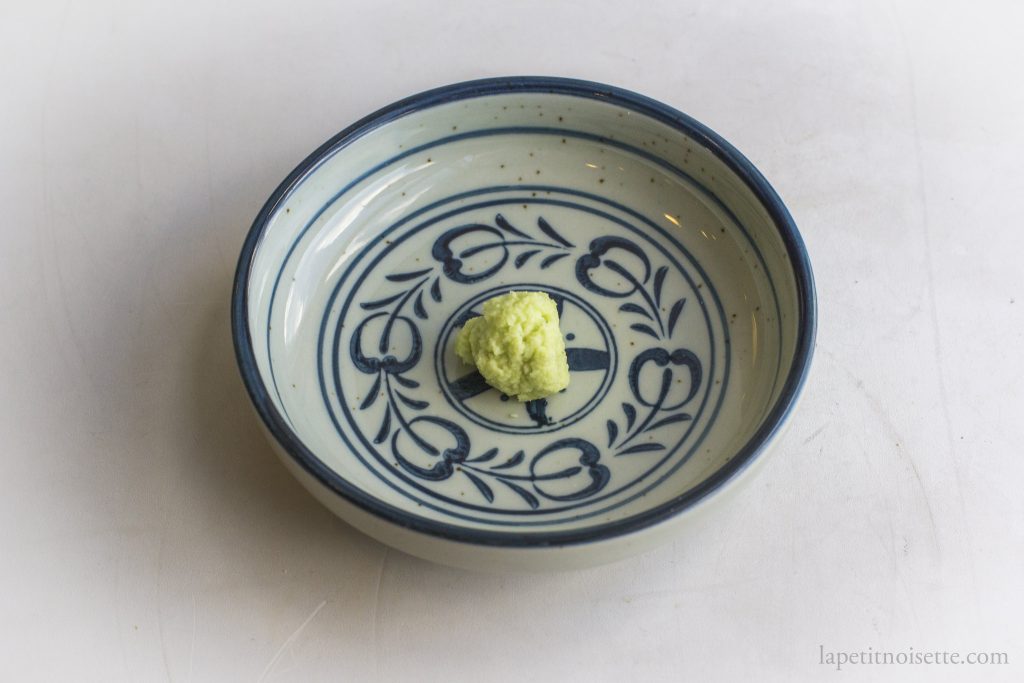
Feel free to reshape the wasabi into a nicer pile if you cannot place it down in one motion. It takes practice to do so.
The grater is then washed and allowed to dry. Any tarnishes on the grater or rust on the handle is removed with a Sabitoru stone everyday. Do not run the Sabitoru stone on the actual grating spikes.
I learned a few years ago that what I thought was wasabi was really horseradish and my mind was blown!
These pics are GREAT.